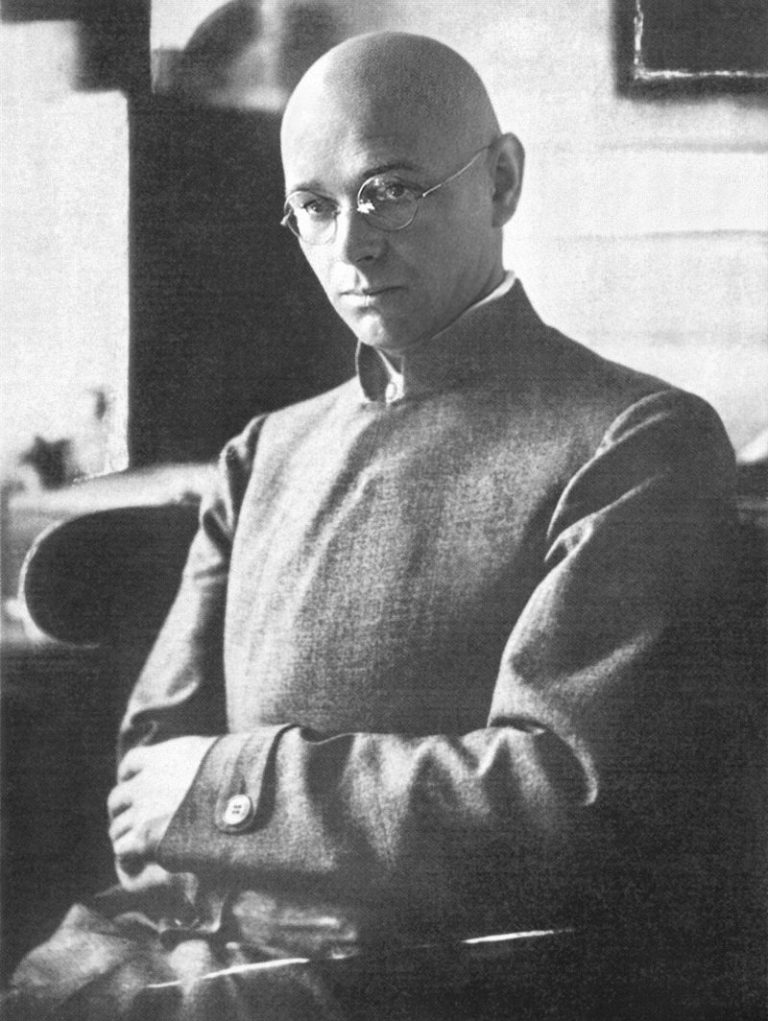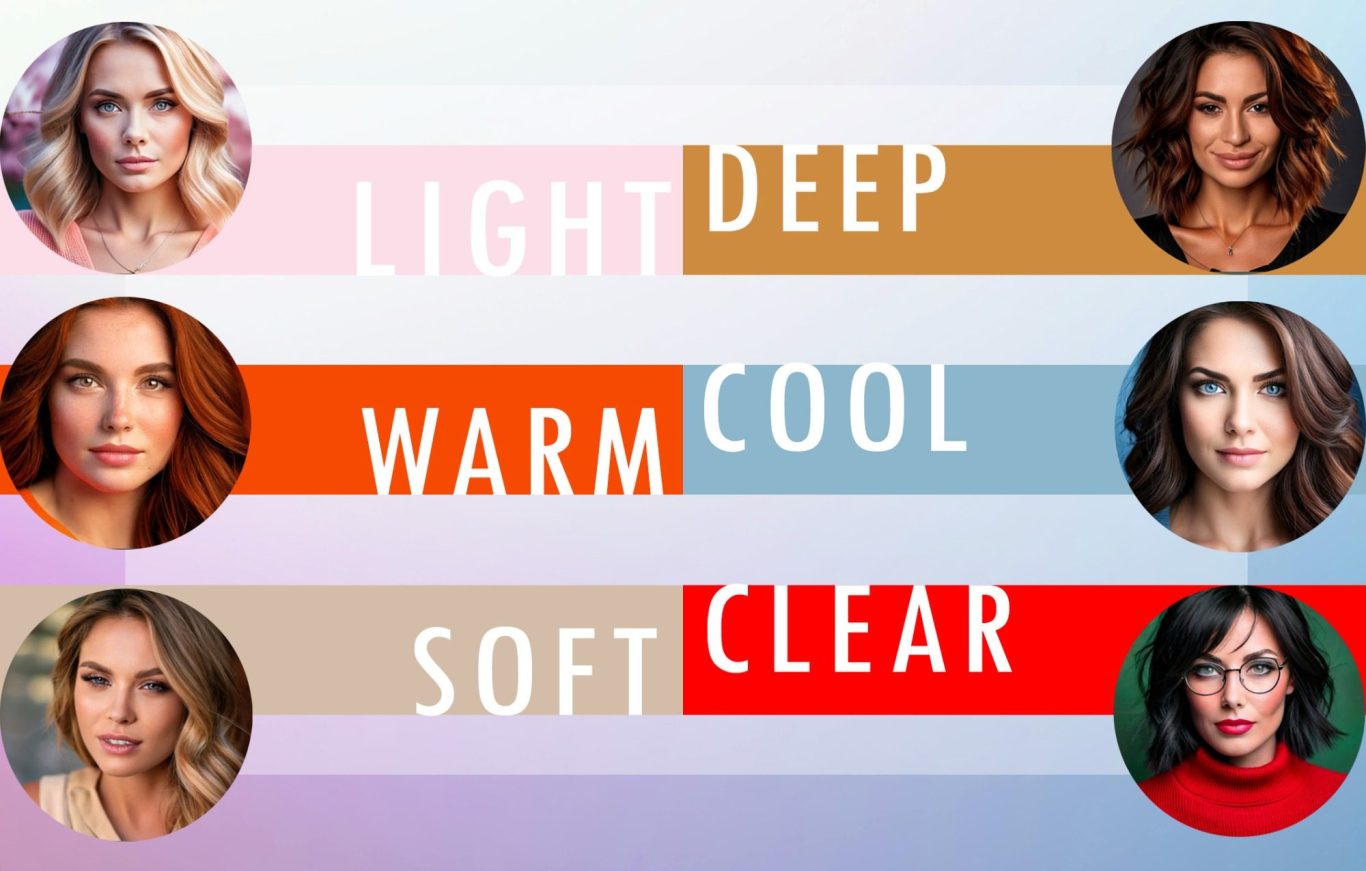16 Season Colour Analysis Quiz | How to Know Your Colour Type?
The Origins of Seasonal Colour Analysis
Colour analysis isn’t just a trend—it’s a journey that started with a simple question: why do some shades make us shine while others fall flat?
From an artist’s keen eye to a fashion revolution, this system has evolved into a powerful tool for discovering your perfect palette. Let’s explore how it all began, starting with the four seasons that set the stage.
The Four Main Colour Seasons
At the heart of seasonal colour analysis lies a brilliant idea: your natural colouring—skin tone, hair, and eyes—can guide you to a palette that’s uniquely yours. This concept crystallized into four distinct categories, each inspired by nature’s cycles: Spring, Summer, Autumn, and Winter.
But how did these seasons come to be? It all started with Johannes Itten, a Swiss painter and teacher at the Bauhaus school in the 1920s.
Fascinated by colour theory, Itten noticed his students didn’t just pick random hues—they were drawn to shades that echoed their own features. A redhead might lean toward earthy coppers, while a cool blonde reached for icy blues. Intrigued, he began experimenting.

Paula Stockmar (as mentioned at https://bauhaus.daserste.de/credits)Derivative work: Magenta Green.
Itten didn’t stop at observation. He dug into the science of colour harmony and the emotional power of hues, drawing inspiration from nature itself.
He saw how spring blossoms burst with warm, clear tones; how summer softened into cool, muted pastels; how autumn deepened into rich, golden shades; and how winter sharpened into stark, vivid contrasts.
From this, he crafted a system linking human colouring to these seasonal rhythms—Spring for the warm and bright, Summer for the cool and soft, Autumn for the warm and deep, Winter for the cool and bold.
It was an artistic hunch backed by a painter’s eye, laying the groundwork for a style revolution. Here’s what each season brings to the palette:
These four seasons became the cornerstone of colour analysis, turning Itten’s insight into a practical tool. But it took a few more decades—and a fashion-forward leap—to bring them into the spotlight.
Spring

Spring: Fresh and warm, like a sunny meadow in bloom. Spring palettes glow with light, clear colours—peachy pinks, golden yellows, and soft aquas. If you’ve got warm undertones and a bright, youthful vibe, Spring might be your match.
Summer

Summer: Cool and gentle, Summer feels like a hazy beach day. Its muted, dusty tones—soft lavenders, cool blues, rosy taupe's—suit those with subtle, ashy undertones and a calm radiance.
Autumn

Autumn: Rich and earthy, Autumn captures a harvest sunset. Deep oranges, olive greens, and spicy mustards shine on people with golden or reddish undertones and a warm, grounded energy.
Winter

Winter: Bold and crisp, Winter mirrors a snowy night under moonlight. Its cool, vivid shades—jet blacks, icy blues, jewel-toned reds—pop on those with striking features and cool undertones.
From Art to Fashion: The Rise of Colour Me Beautiful
Fast forward to the 1980s—a decade of big hair, bold vibes, and a growing obsession with personal style. Enter Colour Me Beautiful, a game-changer founded by Carole Jackson that takes the four-season framework and turns it into a cultural phenomenon.

Photo of 1980s fashion style, CONICET, Public domain, via Wikimedia Commons
What started as an artist’s theory becomes a hands-on style revolution. Jackson’s stroke of genius? She makes it practical: a book, a system, and a movement where women everywhere start draping fabrics over their shoulders to find their season. “Am I a Winter or a Spring?” becomes the question on everyone’s lips.
Colour Me Beautiful doesn’t just popularize the idea—it democratizes it. With her iconic book hitting shelves in 1980, Jackson offers a step-by-step guide that’s chic, accessible, and downright addictive.
Salons pop up, consultants train, and suddenly, seasonal colour analysis isn’t just for artists—it’s for the everyday woman wanting to glow.
The four seasons become a wardrobe superpower, helping women ditch the guesswork and embrace shades that flatter them most.
As a designer, I can still feel its influence rippling through fashion today. But here’s the twist: those four seasons were only the starting point—stay tuned to see how this story gets even more colourful.
The Evolution from 4 Seasons to 16 Seasons
So, why stop at four? Colour Me Beautiful gave us a fabulous start—those Spring, Summer, Autumn, and Winter vibes were a revelation. But as a colour consultant, I’ve seen how human beauty doesn’t always squeeze into just four boxes.
By the ‘90s, analysts (and stylish rebels like me!) realized some of us were falling through the cracks—those in-betweeners who weren’t fully “Warm” or “Cool.” The four-season system was like a little black dress: timeless, but ready for a remix.
Enter the 12-season system, adding sub-seasons like “Soft Summer” or “Bright Winter” to the mix. Colour Me Beautiful evolved too, shifting from four seasons to six core tones—Warm, Cool, Light, Deep, Clear, and Soft—giving us more room to play.
But even that wasn’t enough for the colour-obsessed (guilty!). The 16 Season Colour Analysis System takes it to the next level, splitting each season into four ultra-precise sub-categories. It’s like upgrading from a capsule wardrobe to a full-on couture closet.
Colour Me Beautiful fits right in here—its six-tone foundation inspires modern 16-season spins, blending classic seasonal roots with next-level customization. Think of it as the bridge between “I’m a Winter” and “I’m a Shaded Winter with a Clear twist.”
It’s not just about seasons anymore—it’s about your season. And trust me, uncovering that is a thrill worth chasing.

How Does the 16 Season Colour Analysis Work?
Okay, let’s get to the juicy part—how does this magic happen? As a fashion designer, I live for the moment when a client’s face lights up under the right shade.
The 16-season system takes your natural features—skin tone, hair colour, eye sparkle—and matches them to a hyper-specific palette. We’re talking undertones (warm, cool, or neutral), value (light or dark), and chroma (bright or muted).
Picture me draping luxurious fabrics across your shoulders in a consultation. We’re not guessing here—it’s a science-meets-art dance. Does that soft peach lift your complexion, or does a bold cobalt make your eyes pop?
The 16-season system digs deeper than ever, splitting each of the four main seasons (Spring, Summer, Autumn, Winter) into four sub-seasons. It’s like a treasure map to your best colours—and I’m your guide.
Different Interpretations of the 16 Season System
Now, here’s where it gets really fun. The 16-season system isn’t one-size-fits-all—it’s got multiple personalities, each with its own flair. As a pro, I’ve explored them all, and I’m breaking them down for you like the ultimate style BFF.
Colour Me Beautiful

Let’s talk Colour Me Beautiful—the OG that’s still got it going on. Born in the ‘80s by Carole Jackson, this system kicked off the seasonal craze with four seasons but has since evolved into a 6-tone powerhouse: Warm, Cool, Light, Deep, Clear, and Soft.
It’s the foundation I lean on for my own quiz (more on that later!), and pros have stretched it into 16-season territory by blending tones with seasonal vibes. It’s approachable yet deep—think of it as your stylish big sister who knows exactly what flatters you. If you love a classic vibe with a modern twist, this one’s a must-know.
The Sci\ART Method

First up, the Sci\ART method—think of it as the brainy beauty of the bunch. Developed by Kathryn Kalisz, this system is rooted in the Munsell Colour System (yes, it’s legit science!).
It starts with 12 tones but has inspired 16-season spins, focusing on hue, value, and chroma. If you’re a data-driven gal who loves precision, Sci\ART is your vibe. It’s like having a PhD in you.
4x4 Colour System

Next, the 4x4 Colour System by Ferial Youakim—my designer heart beats for this one. It takes the four seasons and splits each into four sub-categories: Pure, Tinted, Toned, and Shaded. It’s bold, it’s universal, and it’s perfect for creating standout looks. Imagine rocking a Tinted Spring palette with pastel pops—chic and
Tonal Colour Analysis

Then there’s Tonal Colour Analysis, the flexible friend. Instead of strict seasons, it zones in on your dominant trait—Light, Deep, Soft, Bright, Warm, or Cool—then layers in sub-tones.
I adore this for clients who shift over time (hello, grey hair glow-up!). It’s less about rules and more about flow—ideal for your ever-evolving 30s style.
Custom Systems

Some analysts go rogue with custom 16-season systems, blending seasons like a colour cocktail. Think “True Bright” (Bright Winter meets Bright Spring) or “True Soft” (Soft Summer plus Soft Autumn). It’s bespoke beauty—perfect if you’ve ever felt stuck between seasons.
House of Colour

Lastly, House of Colour brings its own 16-season twist, with unique names and vibes (think “Sapphire Winter” or “Golden Autumn”). It’s a branded experience that’s super accessible, especially if you love a community vibe with your colour journey.
Which one’s for you? That’s the fun part—keep reading to find out!
The Benefits of the 16 Season System
Why go 16 seasons deep? Oh, honey, the perks are endless. As a designer, I’ve seen this system work miracles:
- Precision Perfection: No more “close enough” colours—it’s your exact shades.
- Confidence Boost: Wearing your palette feels like a superpower—you’ll radiate every time you step out.
- Wardrobe Wins: Shopping becomes a breeze when you know what to grab (and what to skip).
- Versatility: With 16 options, there’s a palette for every mood, occasion, and season of life.
Imagine slipping into a dress that doesn’t just fit—it flatters. That’s the 16-season promise.
The Complexity of the 16 Season System
Okay, let’s keep it real—16 seasons can feel like a lot. It’s not a quick “pick a season and go” deal. As a consultant, I’ll tell you straight: it’s intricate.
You’re juggling undertones, sub-seasons, and sometimes multiple systems. It’s why pros like me exist—decoding this takes skill (and a little obsession).
But here’s the psychology trick: complexity hooks you. It’s like a puzzle—once you start, you need to know your season. And when you do? That “aha!” moment is pure gold.
Sure, it’s not DIY-friendly for everyone (draping is key!), but that’s what makes it special. It’s a journey, not a sprint—and I’m here to guide you every step of the way.
Feeling a little overwhelmed by the 16-season maze? Don’t worry—I’ve got the perfect starting point for you. My free and easy colour analysis quiz simplifies the magic, drawing on the timeless Colour Me Beautiful system’s six core classifications (think Warm, Cool, Light, Deep, Clear, and Soft).
It’s a quick, fun and free way to dip your toes into your colour story before diving into the full 16-season adventure. Curious about your vibe? Take the quiz now and find out—it’s like a coffee date with your future fabulous self.
Trust me, those first clues to your perfect colours are just a click away!
We need your consent to load the translations
We use a third-party service to translate the website content that may collect data about your activity. Please review the details in the privacy policy and accept the service to view the translations.
